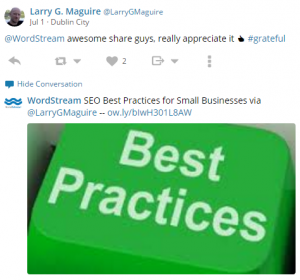Innovation doesn’t have to belong solely to the small and nimble. Columnist Alex Lirtsman explains what big businesses can do to adapt and evolve.
 Once considered the top of the business food chain – too big and too strong to fail – established corporations now face an interesting dilemma. Their industries are being bombarded by innovative disruptors that are embracing the digital revolution, staying relevant to ever-evolving consumers, and optimizing their processes. As trust in big brands erodes, consumers are migrating to these companies that are more authentic, relevant and engaging.
Once considered the top of the business food chain – too big and too strong to fail – established corporations now face an interesting dilemma. Their industries are being bombarded by innovative disruptors that are embracing the digital revolution, staying relevant to ever-evolving consumers, and optimizing their processes. As trust in big brands erodes, consumers are migrating to these companies that are more authentic, relevant and engaging.
Corporations must evolve or face extinction. But what can they do now that they’re too big and too traditional to pivot?
The challenge is that enterprises recruit and develop talent to avoid risk and steer clear of any turbulence. That makes innovation difficult, if not impossible.
Entrepreneurial, risk-prone employees are the ones who gain career fulfillment in disruptive companies, so holding onto the “unicorns” who already exist in the enterprise is key.
Other challenges for the enterprise include entrenched infrastructure, politics and outdated product development and product marketing processes. In the end, there is no short-term ROI on risk in the enterprise, and ROI is typically managed by looking at risk vs. innovation.

So what can an enterprise do to become innovative, not in lip service but in practice? Here are a few mantras:
Failure Is The New R&D
A leap of faith, especially within a traditional business, takes courage, a strong vision and the right leadership culture.
Saying “yes” is easy when you lead a team of 20, but it can become more difficult when the team is thousands of people large and financial performance is measured in daily stock movements rather than long-term appreciation.
The C-Suite needs to understand that innovation is a contact sport and be the front line in driving innovation in order for the rest of the company to follow.
Innovation also means accepting failure. If more than 90 percent of startups fail, why would an enterprise have better results? Failure is the new R&D.
With the right filters in place, an adapted culture empowers rapid teams to fail fast, learn, adopt, try again and eventually share in the wins with the entire organization.
There are countless reasons to say “no” to innovation, but it takes just one organization to say “yes” to one idea that may cause disruption in an industry. Think Uber, Airbnb or Netflix.
Scrap The Outdated, Entrenched Processes
New, disruptive organizations are built or evolve to have agility and innovation as a part of their DNA. Coupled with incredibly low interest rates, they have the ability to grow and turn on a dime.
While they may lack infrastructure, the lower overall cost of technology and product development has made that a competitive advantage, because they are not relying on outdated and entrenched processes, platforms, contracts and systems. Those processes make it harder for corporations to evolve and recruit top talent required for a customer-centric evolution.
Corporations can’t think like startups — it’s not in their DNA. But borrowing what’s working from startups, like open-source technology, rapid prototyping, frameworks and lead product development, shouldn’t throw up as many flags as it used to.
Infrastructural changes are not easy, but they’re required to create adaptive frameworks to achieve organizational excellence to adapt to the new consumer landscape.
Don’t Buy Your Way Into Innovation
Selecting the biggest or most well-known solution to adapt to the changing consumer landscape just hampers the agility that startups have leaned on to move more quickly.
Many corporations simply try to buy their way to becoming more innovative through larger agencies, vendors, platforms and acquisitions. This is spitting in the wind of innovation or agility, and the result is usually more of the same.
Empower Individual Teams Rather Than Rely On Centralized Decision Making
Corporations must use the strength of empowered teams to achieve operational effectiveness through available organizational resources. Those resources, like capital, legal, HR, engineering and marketing, need to adapt to serve the consumer, not restrict the resolve of innovation.
Innovators at companies need to feel like they are as empowered as a startup owner, but with the capital and distribution reach of the entire organization. This provides true leverage for an organization.
Brands that foster innovation within a startup-driven culture enable teams to think outside the organization while leveraging corporate strengths. They embrace tools like rapid prototyping vs. design by committee, true in-market research vs. huge focus groups, integrated analytics vs. separate analytics departments, growth hacking a user base vs. traditional advertising and lean product development vs. building for the edge case.
All organizations — even large corporations — are capable of reaching these heights. Sometimes it just takes empowerment of a few leaders to get them there.
Some opinions expressed in this article may be those of a guest author and not necessarily Marketing Land. Staff authors are listed here.
(Some images used under license from Shutterstock.com.)
Marketing Land – Internet Marketing News, Strategies & Tips
(230)
Report Post






